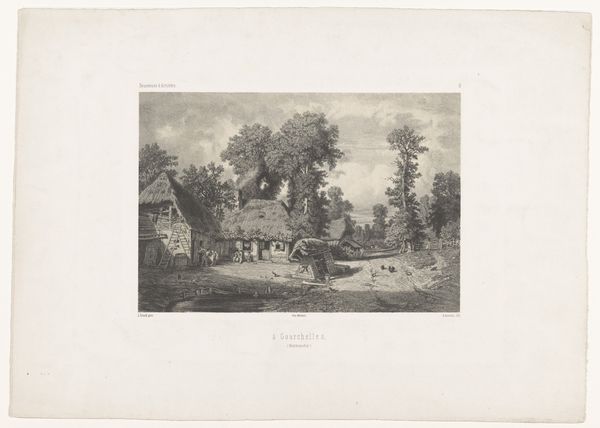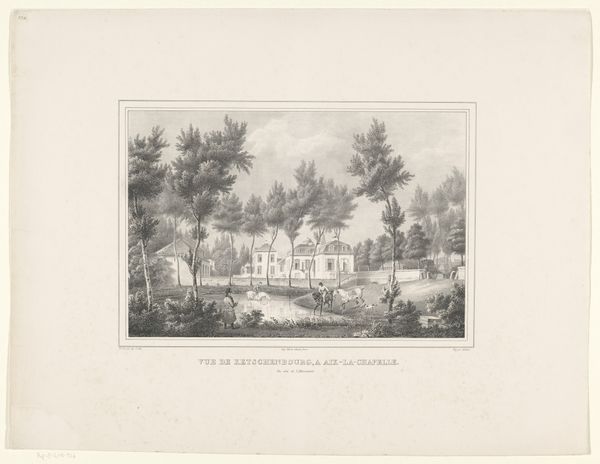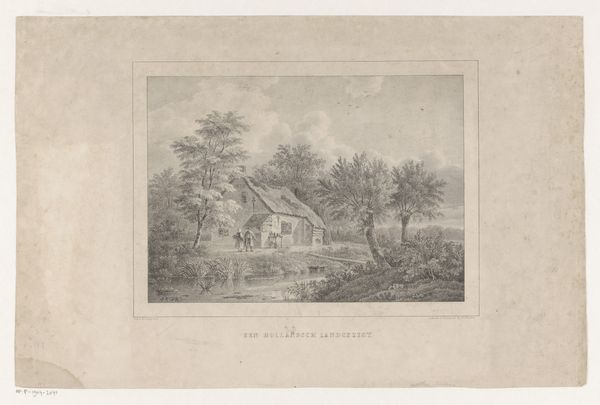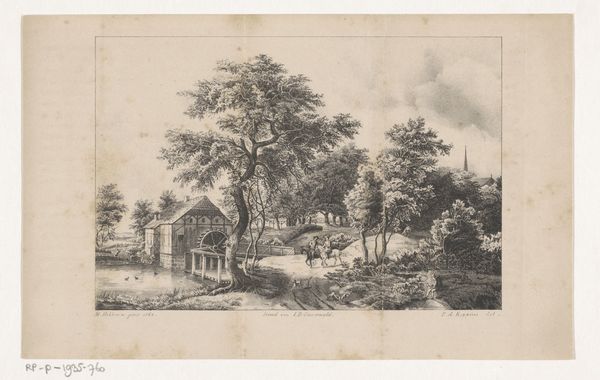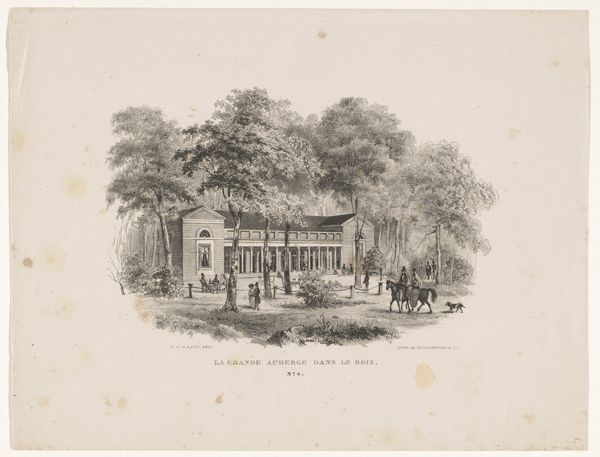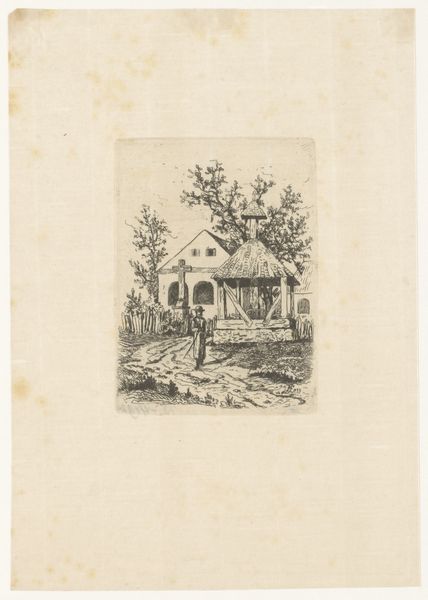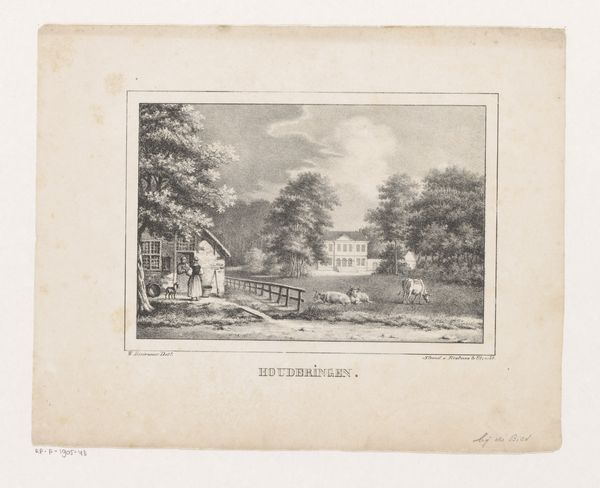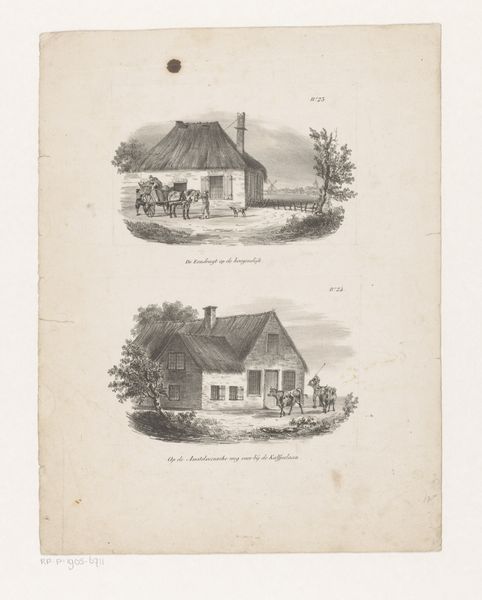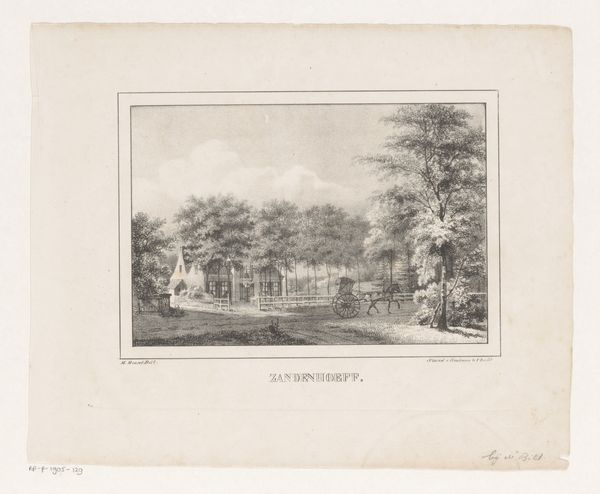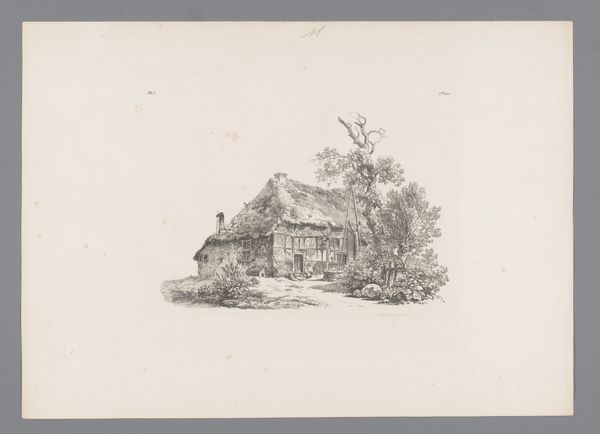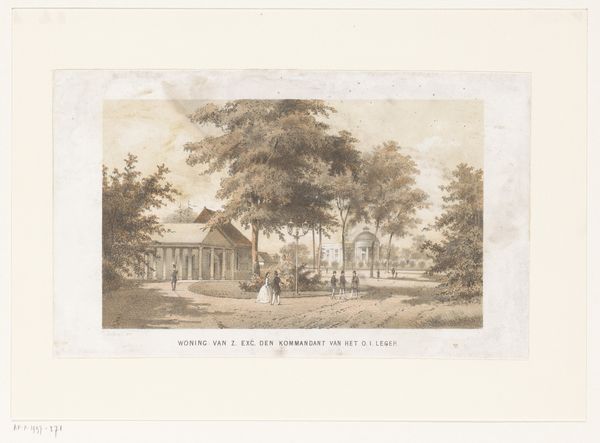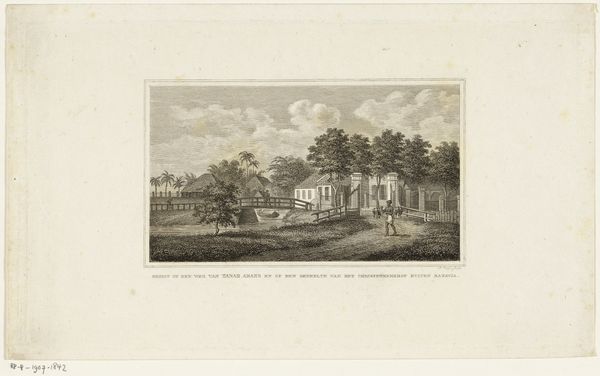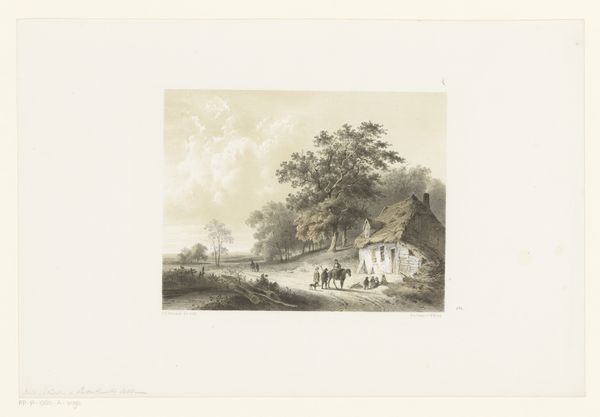
print, engraving
# print
#
landscape
#
genre-painting
#
engraving
#
realism
Dimensions: height 315 mm, width 221 mm
Copyright: Rijks Museum: Open Domain
Curator: This engraving, "Twee dromedarissen in Artis," or "Two Dromedaries in Artis Zoo," dates roughly from 1835 to 1904 and is by D. Verest. What strikes you first about it? Editor: Well, I’m drawn to the tonal range achieved through engraving—a method dependent on meticulous labor. But before even that, my immediate impression is one of tranquility; a palpable sense of calm emanating from the stillness of the composition. Curator: Indeed, the balanced composition, with the architectural structure mirroring the verticality of the trees, establishes a pleasing harmony. Notice the engraver's masterful rendering of light and shadow to convey form and depth. Editor: Certainly, that effect speaks to the hand skills involved in the print's production. You see the controlled intensity, even uniformity, applied to generate half-tones. But this is a work of documentation and a certain vision of nature brought under human administration and observation. Curator: Precisely! It showcases a structured, ordered landscape typical of genre-painting. It’s a controlled portrayal of exotic animals contained within a constructed environment. The sharp line of the fence behind underscores this containment, defining a space. Editor: A space which hides the processes that bring us to it. Where did Verest source his materials? What were the conditions in which he worked, translating that three-dimensional, likely hectic scene at the zoo to a static, contained scene? It has an allegorical charge here, suggesting the relationship between humans and the natural world mediated through production. Curator: That’s a salient point; it shifts how we interpret what is literally in front of us: form, light, shade, and figure relations that articulate depth, proximity, and distance become a kind of rhetoric. Editor: Agreed, a deliberate construction rooted in its moment. And now I also note how, within the apparent simplicity of form and setting, are layers of process, intentional and accidental, which reveal more than its first impression conveys. Curator: And, through that layered approach, an articulation of human interaction with environment which encourages viewers to engage in thoughtful inquiry, expanding outward through context to connect our modern world.
Comments
No comments
Be the first to comment and join the conversation on the ultimate creative platform.
